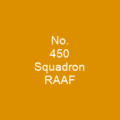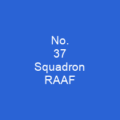Unveiling Australia’s Role in the Battle of Normandy
Australia’s contribution to the historic Battle of Normandy was significant, yet often overshadowed by other Allied forces. Over 3,000 Australian military personnel served under British command during this pivotal moment in World War II. These brave souls played a crucial role in supporting ground operations and defending the beachhead from air attacks.
Australian Air Force in Action
Most of these Australians were members of the Royal Australian Air Force (RAAF), with smaller numbers participating on the ground. The RAAF was under the command of the RAF, including two RAAF squadrons assigned to the Second Tactical Air Force. Four heavy bomber squadrons formed part of RAF Bomber Command, equipped with Lancasters and Halifaxes.
Key Squadrons and Their Missions
No. 456 Squadron was a specialist night fighter unit operating Mosquitos in Air Defence of Great Britain. Three RAAF squadrons supported operations in Normandy as part of Coastal Command: No. 10, No. 461, and No. 455 Squadrons. These flying boats patrolled waters around the UK and France, while No. 455 Squadron targeted E-boats operating near Normandy.
On D-Day, Australian aircrew participated in precision bombing raids on German coastal artillery batteries and provided support for the fighting. They also served as part of transport aircraft carrying the British 6th Airborne Division from the UK to Normandy. The RAAF’s No. 453 Squadron provided low-altitude air defence for the invasion fleet and landing force, while No. 456 Squadron supported air defence at night.
Special Operations and Missions
Australians also participated in special operations, including Lieutenant Ken Hudspeth’s midget submarine mission to inspect French beaches for the invasion and Nancy Wake’s parachute drop into France to help organize the French Resistance. On D-Day, Australian aircrew were involved in precision bombing raids on German coastal artillery batteries and provided support for the fighting.
Continued Operations Post-D-Day
The fighting continued until August 1944, with Australian airmen playing a significant role. No. 453 Squadron flew more than 700 sorties, and Australians posted to RAF squadrons equipped with Hawker Typhoon fighter-bombers attacked German vehicles and positions in direct support of the Allied ground troops throughout the month.
No. 456 Squadron’s night fighters conducted patrols over Normandy, shooting down four German bombers on one occasion. The unit was tasked with intercepting V-1 flying bombs from July onwards. Australian flying boat squadrons sank several German submarines in July and August, contributing to six submarine sinkings.
Conclusion
Australia’s contribution to the Battle of Normandy is a testament to their bravery and dedication during World War II. Despite being overshadowed by other Allied forces, Australian military personnel played a crucial role in supporting ground operations and defending the beachhead from air attacks. Their legacy lives on through memorials and cemeteries in London and Normandy, reminding us of their sacrifice.

You want to know more about Australian contribution to the Battle of Normandy?
This page is based on the article Australian contribution to the Battle of Normandy published in Wikipedia (retrieved on November 28, 2024) and was automatically summarized using artificial intelligence.







